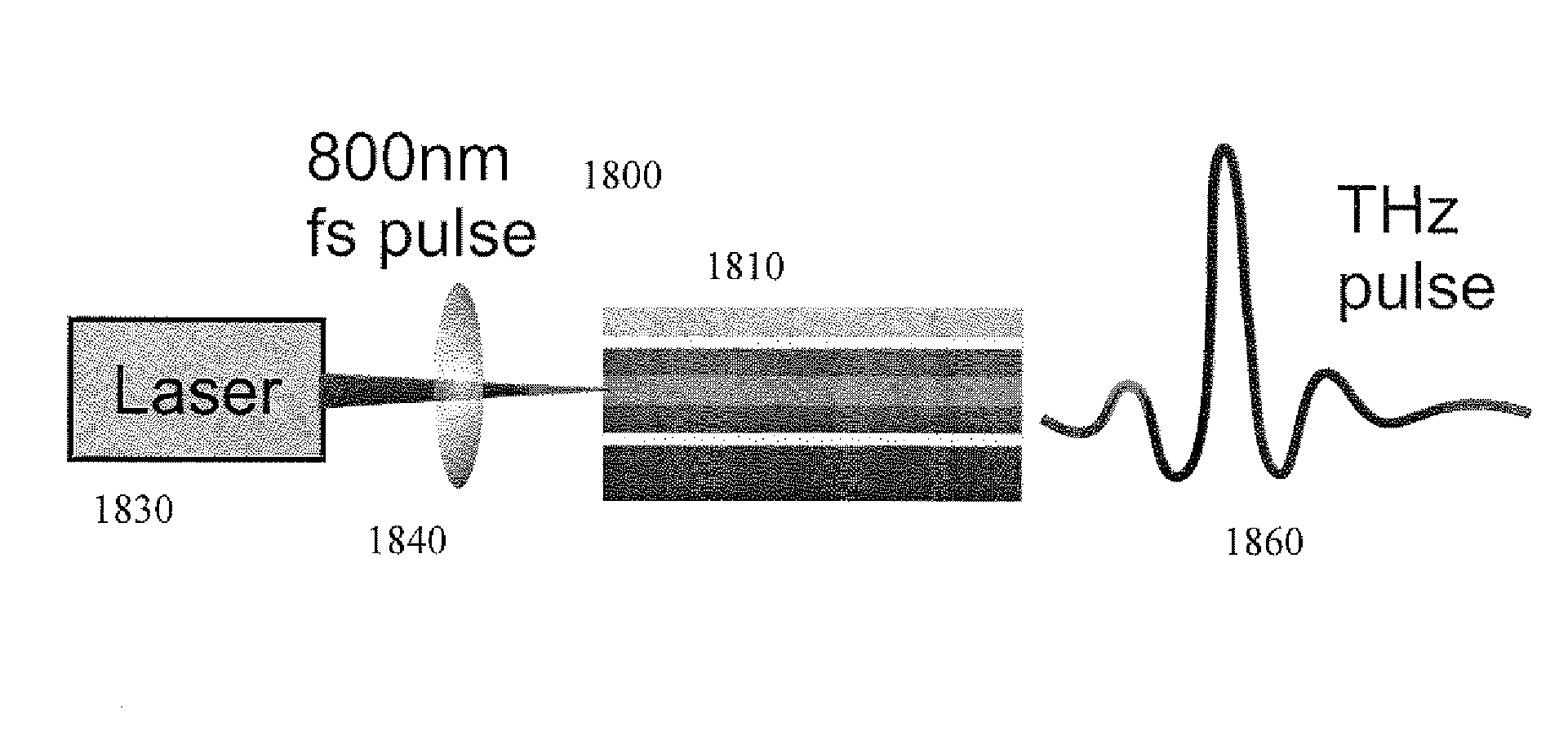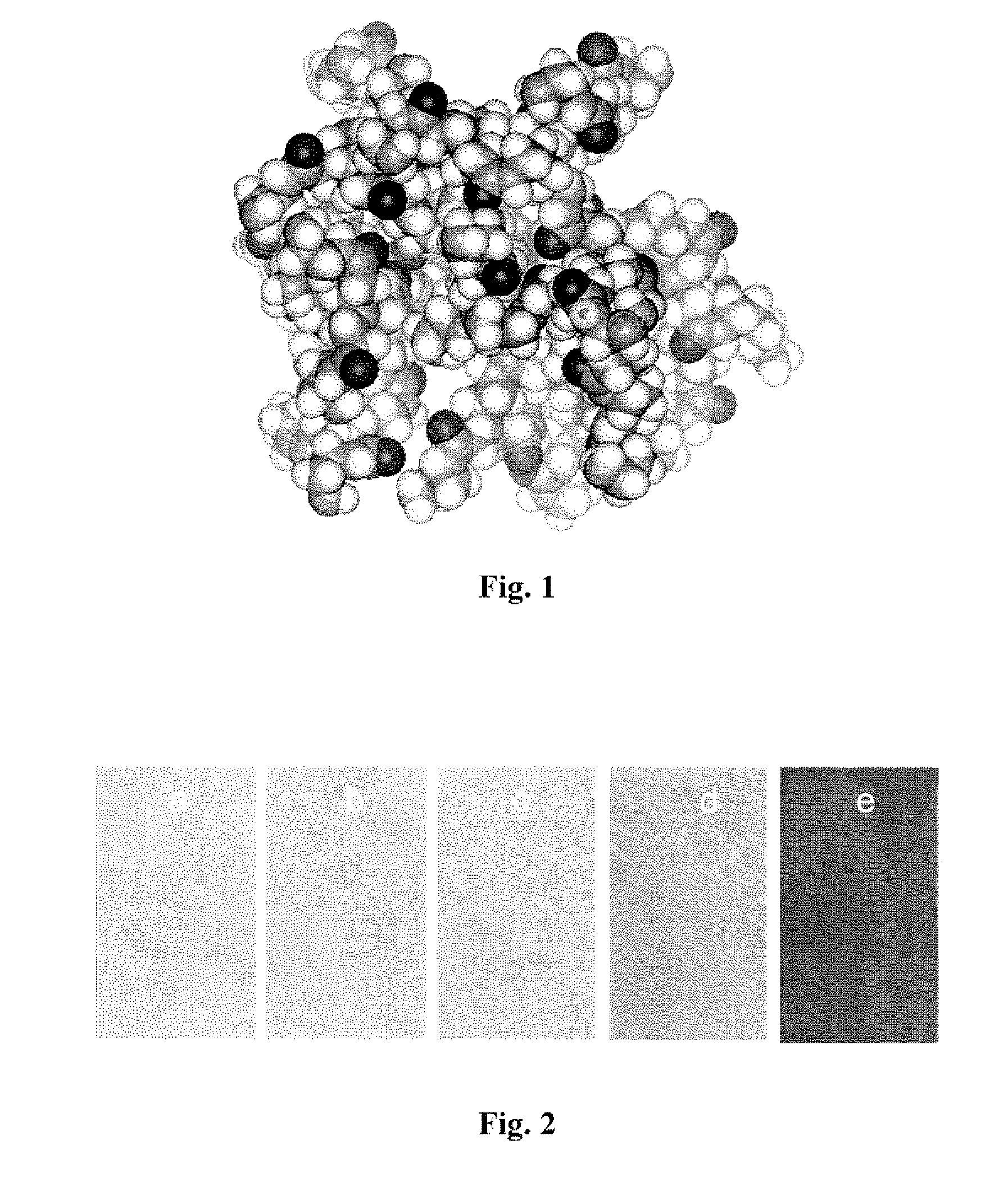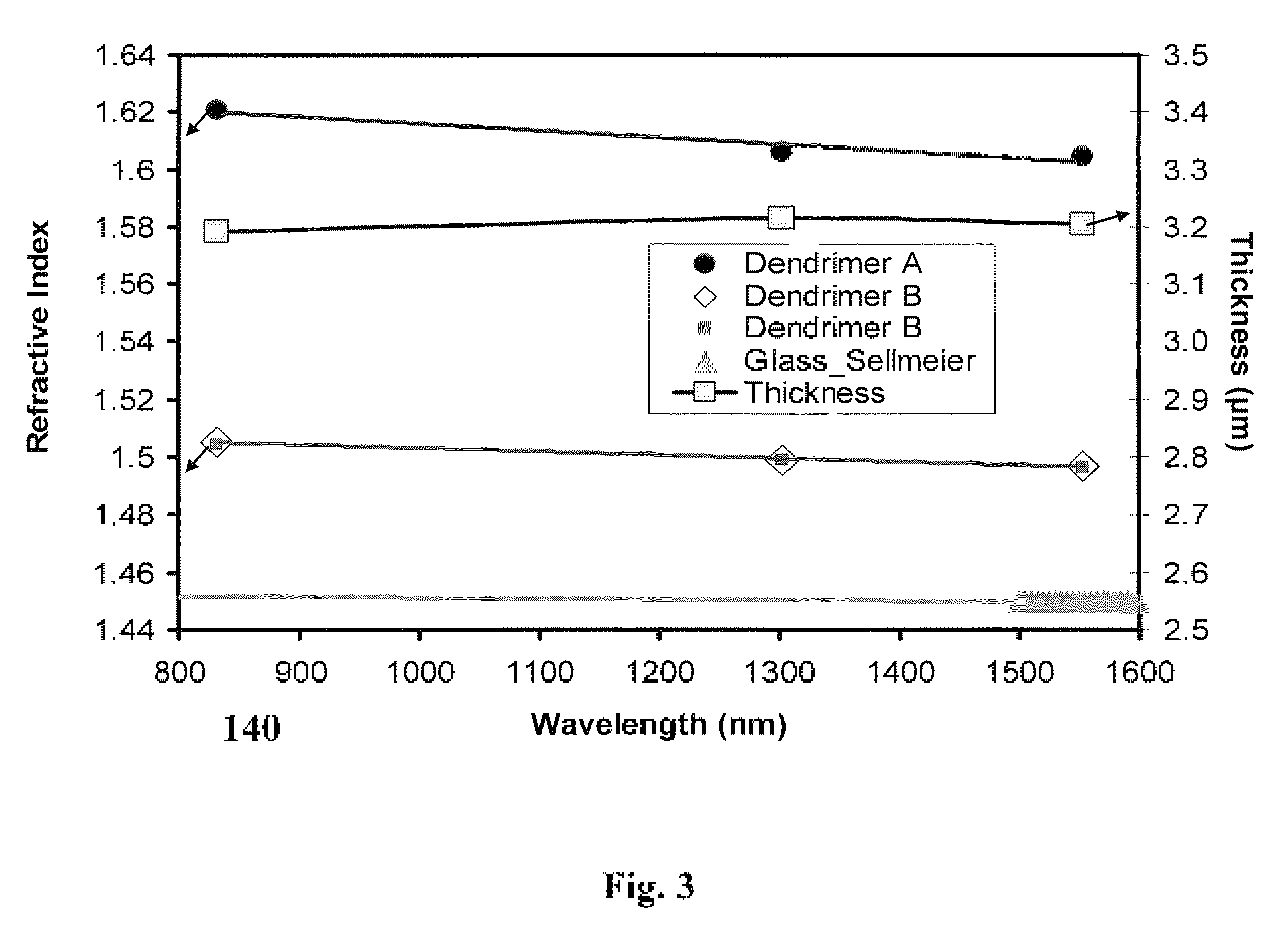Dendrimer based terahertz generator
a generator and terahertz technology, applied in the field of high electrooptic (eo) efficiency waveguide based nanophotonic integrated circuits, can solve the problems of incompatibility between monolithic lithography and integrated device fabrication, high temperature processing, and limited device performance, and achieve high efficiency, low dielectric loss, and inherent power scalability
- Summary
- Abstract
- Description
- Claims
- Application Information
AI Technical Summary
Benefits of technology
Problems solved by technology
Method used
Image
Examples
Embodiment Construction
I. Overview
[0042]Higher Electro-optic (EO) coefficient is a key material parameter to make high sensitivity devices such as high power THz source. A higher EO coefficient and a higher susceptibility of dendrimer can be exploited for THz generation with pulsed and continuous wave (CW) lasers that yields a higher power compared to other sources. Another aspect of the disclosed devices is the fiberoptic connectivity with single-mode fiber. Single mode fiber has THz bandwidth available; however, a THz computing platform is still not available, because, there is no suitable THz generator for computing.
[0043]Integrated chip architecture—Above all, dendrimer EO devices can be fabricated on a chip with multiple functionalities, leading to an optical processor that enables high-speed, high bandwidth computing and sensing with a higher reliability.
[0044]The aforementioned capabilities are unique and enable many new applications while aiding in significant improvement of current applications. ...
PUM
 Login to View More
Login to View More Abstract
Description
Claims
Application Information
 Login to View More
Login to View More - R&D
- Intellectual Property
- Life Sciences
- Materials
- Tech Scout
- Unparalleled Data Quality
- Higher Quality Content
- 60% Fewer Hallucinations
Browse by: Latest US Patents, China's latest patents, Technical Efficacy Thesaurus, Application Domain, Technology Topic, Popular Technical Reports.
© 2025 PatSnap. All rights reserved.Legal|Privacy policy|Modern Slavery Act Transparency Statement|Sitemap|About US| Contact US: help@patsnap.com



